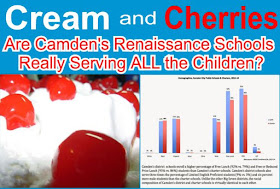NJ Charter schools on the rise, but critics worry about the kids left behind
HACKENSACK, N.J. -- Charter schools are growing across our region, and they’re expanding rapidly in New Jersey.
Governor Christie visited Bergen Arts & Science Charter School in Hackensack today, where he touted the school’s 93 percent graduation rate.
“It’s the type of accomplishment that we want to replicate at charter schools throughout the state, and at traditional public schools as well,” said the Governor.
Christie pointed to senior Abigail Yashiro as an example of what can be accomplished in the right educational setting. Yashiro was 1 of only 2 New Jersey students chosen to represent the state in the United States Senate Youth Program, an honor that Governor Christie had earned when he was in high school.
“I can confidently say that my attendance here has given me personalized attention that has made me the best student and the best leader I can be,” said Yashiro.
But critics are still concerned about the children charters do not take from the traditional public schools.
“The charters kind of cream off the less expensive, easier to educate students,” said Dr. Julia Sass Rubin, an associate professor at Rutgers University Edward J. Bloustein School of Planning and Public Policy. "The more challenging students are left concentrated in the district schools.”
New Jersey Department of Education data shows that traditional public schools keep a higher percentage of children with special needs, kids learning to speak english and the poorest of the poor.
In Hackensack for example, 7 percent of charter school students have special needs. In Hackensack’s traditional public schools, 18 percent of the student population are special needs.
School districts also see their funding cut when charters move in. Tax dollars follow the students who transfer and state aid must be divided. Meanwhile, the traditional public school district continues to bear the brunt of many costs.
"For example, districts pay all transportation expenses for district residents who attend charter, private, and district schools,” she said, "Charter schools do not pick up any of that."
Recently, the Superintendent of Schools in Montclair, New Jersey drafted a letter to the state listing finances as the number one reason why a charter school should not be allowed to move in.
“The diversion of funds would be a tremendous financial burden to the school district,” said Roland Bolandi, Montclair’s Interim Superintendent.
He estimates the district will lose about $2.6 million if the proposed Fulbright Academy Charter School is allowed to open. If Fulbright grows as projected, that amount could rise to $4.7 million.
“Furthermore, budget reductions due to the loss of state aid have already impacted staff, NJ Charter schools on the rise, but critics worry about the kids left behind | New York's PIX11 / WPIX-TV:



